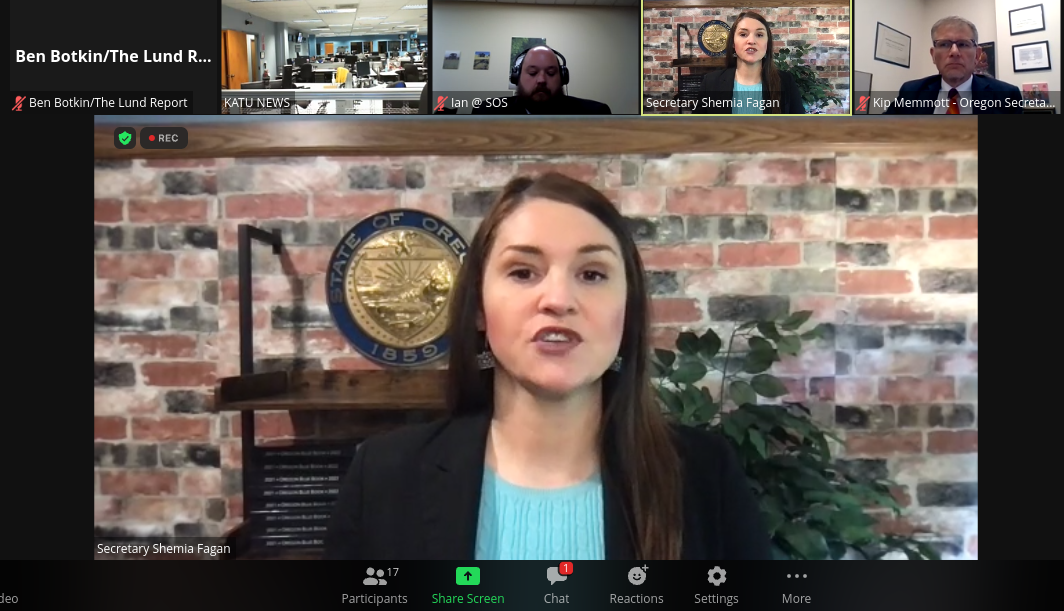
Oregon lawmakers need to fix shortcomings in the state Prescription Drug Monitoring Program, Secretary of State Shemia Fagan said Wednesday.
The prescription drug monitoring program, used by the Oregon Health Authority to flag patients and providers who may be abusing prescriptions, has become a crucial tool to battle the opioid addiction crisis in Oregon. The state has the highest rate of misuse of prescription opioids in the nation, according to a 2020 federal government survey.
State auditors first flagged problems with the program in a 2018 report, finding several weaknesses and noting that other state programs work better in some respects. On Wednesday, Fagan’s office released a follow-up report that found the state has only fully implemented four of a dozen recommendations to improve the program. The report concluded that legislation is necessary to make the improvements, which include sharing data with regulatory agencies and more stringent requirements for when providers must use the prescription database.
Fagan spoke about her mother’s 2009 overdose from opioids, which she survived. Her mother’s husband was afraid to call the police when she passed out after partying the night before, Fagan said, and a family member visiting their house the next day saw her still unconscious and called an ambulance. She was rushed to an intensive care unit and pulled through, though she could have died, Fagan said.
“This audit is about, ultimately, people and about how we can make a difference and do better here in Oregon,” Fagan said, calling it “deeply personal.
“As we all know, the opioid crisis is a grave threat both here in Oregon and around the country.”
In 2020, 462 Oregonians died from unintentional opioid overdoses, up from 280 deaths in 2019, Fagan said.
Shortcomings flagged in the new report include:
- State laws prevent prescription drug monitoring program information from being shared with others, such as law enforcement and licensing boards, to monitor and address questionable prescription activity. “Specific concerning practices cannot be shared with law enforcement and licensing boards,” auditors wrote. Law enforcement and regulators cannot access PDMP data on providers or patients without a court order or an active board investigation.”
- Oregon still does not require prescribers or pharmacists to query the database before certain prescriptions are written or dispensed.
- Oregon’s program has not expanded to collect some prescription information that could be critical in preventing prescription drug abuse, such as prescriptions for controlled substances and prescriptions from veterinarians.
Of the progress so far, Fagan said: “I will just say that's not good enough. It is not.”
She said the monitoring program is “an important tool” to address the opioid crisis and “we have to take full advantage of it.”
The original audit had ripples beyond Oregon. Colorado, for example, audited its own prescription drug monitoring program after Oregon’s audit, said Kip Memmott, audits director for the Secretary of State’s office.
Memmott said the U.S. Attorney's Office requested information from auditors after its 2018 report came out. He said he’s not sure if the state’s information helped federal investigators, but it points to the possibility of legal activity against providers in the future.
The report also noted improvements since the original audit. Those include:
- Staff of the program have worked with health licensing boards to get more prescribers registered with the Prescription Drug Monitoring Program. The percentage of required prescribers now registered reached 85% as of mid-2021, the audit said.
- Staff now include specialty information for registered prescribers in the program
- Further, legislation since the audit has made some improvements, such as “prescriber report cards” to do better analysis of prescribing by individual providers and clinics.
You can reach Ben Botkin at [email protected] or via Twitter @BenBotkin1.